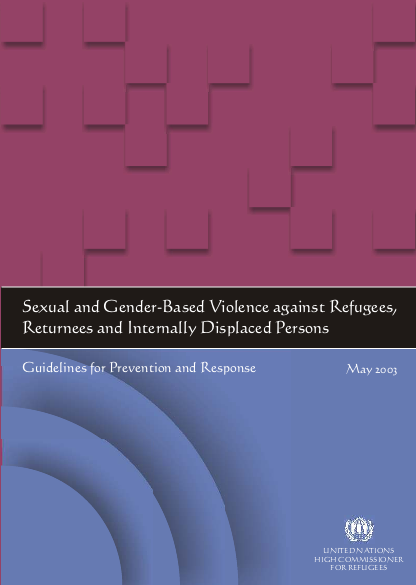
UNHCR first published Sexual Violence against Refugees: Guidelines on Prevention and Response in 1995. By that time, it had become clear that the magnitude of the problem called for a focused approach and considered, concerted actions that had not, until then, been adequately formulated and compiled in any of UNHCR’s earlier publications. The 1995 Guidelines helped create a greater awareness and understanding of this serious human rights violation and laid the foundations for developing programmes to prevent and respond to it. Yet sexual and gender-based violence against refugees, especially women and children, continues unabated. It has been exacerbated by unequal gender relations within communities of concern; it has been used as a weapon of war and as a means of exercising power; it has been both a cause of forced displacement and a terrible consequence of the breakdown of family and community structures that accompanies displacement. It has also been perpetrated by some of the very people who have been entrusted with the task of protecting refugees and displaced persons.
Since 1995, many lessons have been learned concerning individual, institutional and national responsibilities for implementing the Guidelines and for providing protection to uprooted persons. Throughout those years, UNHCR, other UN agencies, governmental and non-governmental organisations, refugees, returnees and internally displaced persons have evaluated the programmes and activities suggested in the Guidelines in the context of complex emergency situations. The culmination of this evaluation process was the Inter-Agency Lessons Learned Conference on Prevention and Response to Sexual and Gender-Based Violence in Refugee Situations, which was held in Geneva in March 2001.
Participants at the Conference identified areas for improvement and highlighted the importance of revising the 1995 Guidelines to reflect progress made over the years and to refine an inter-agency, multi-sectoral approach to addressing sexual and gender-based violence against refugees, returnees and internally displaced persons. Recommendations from the Conference included strengthening institutional commitment by developing a Code of Conduct for humanitarian workers; setting common minimum standards for addressing sexual and gender-based violence; supporting the allocation and management of adequate funding and staff; and integrating a gender-equality perspective in institutional practices. Participants emphasised the need to engage the refugee community in all stages of programme delivery: design, implementation, monitoring and evaluation.
